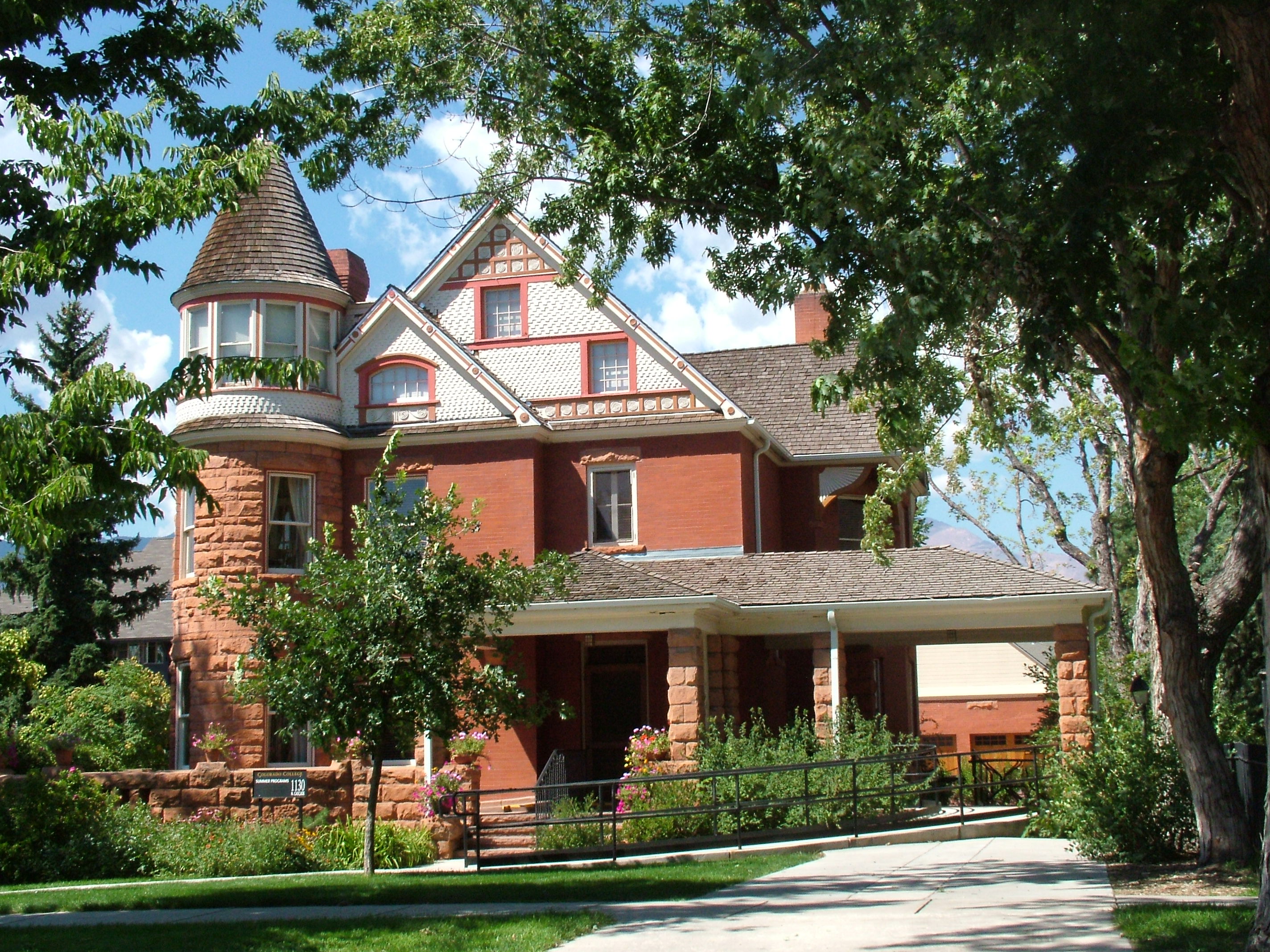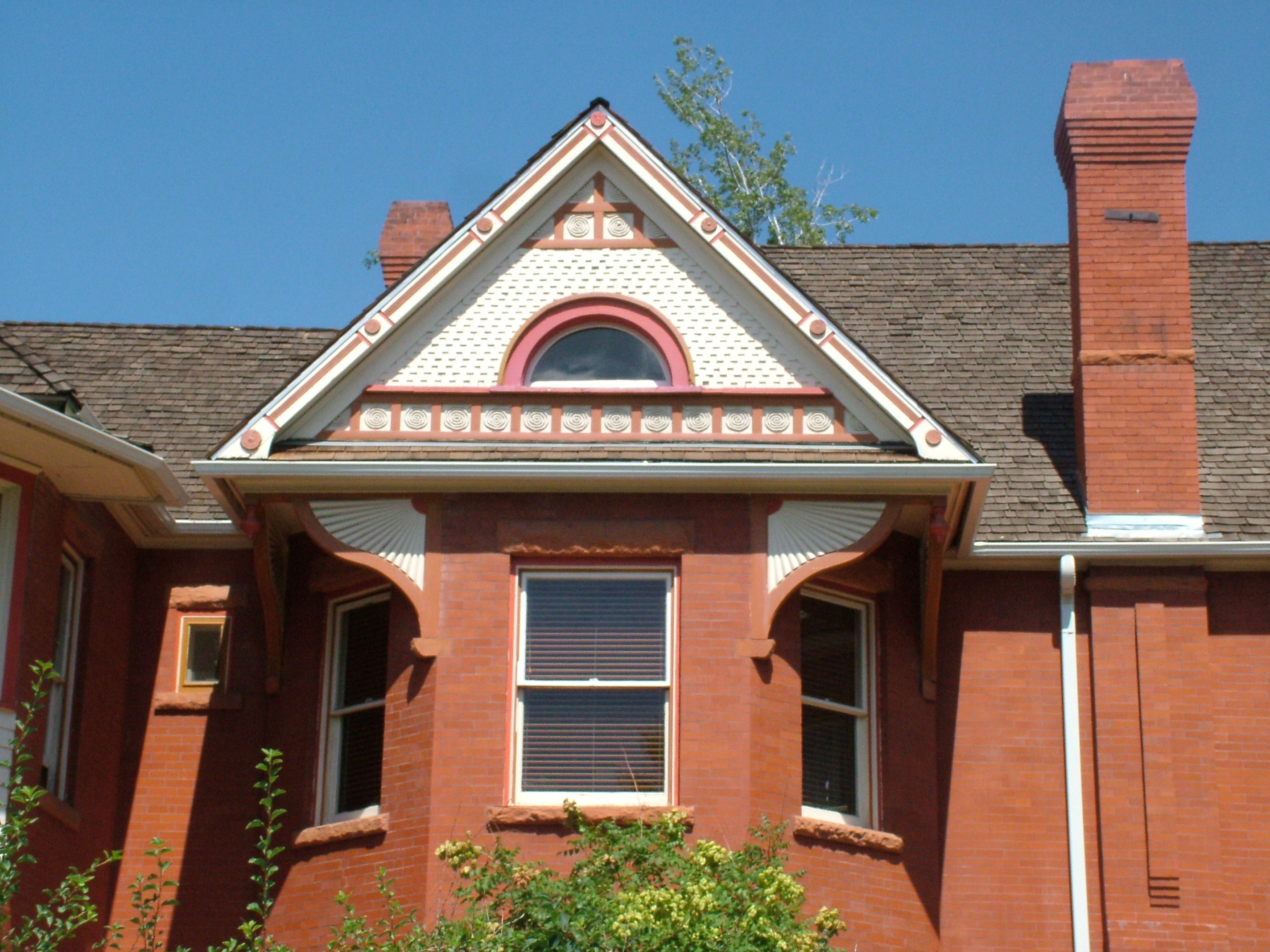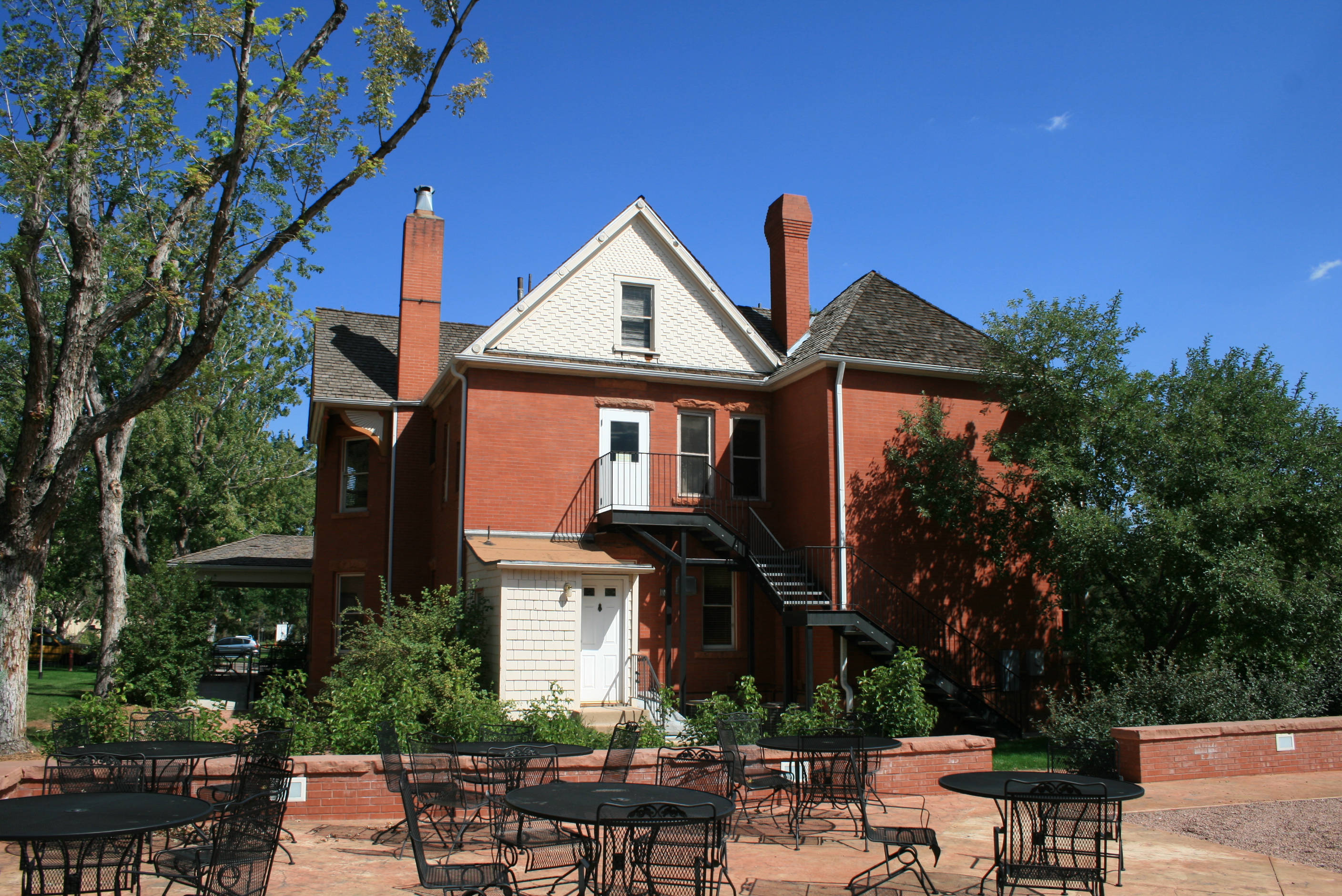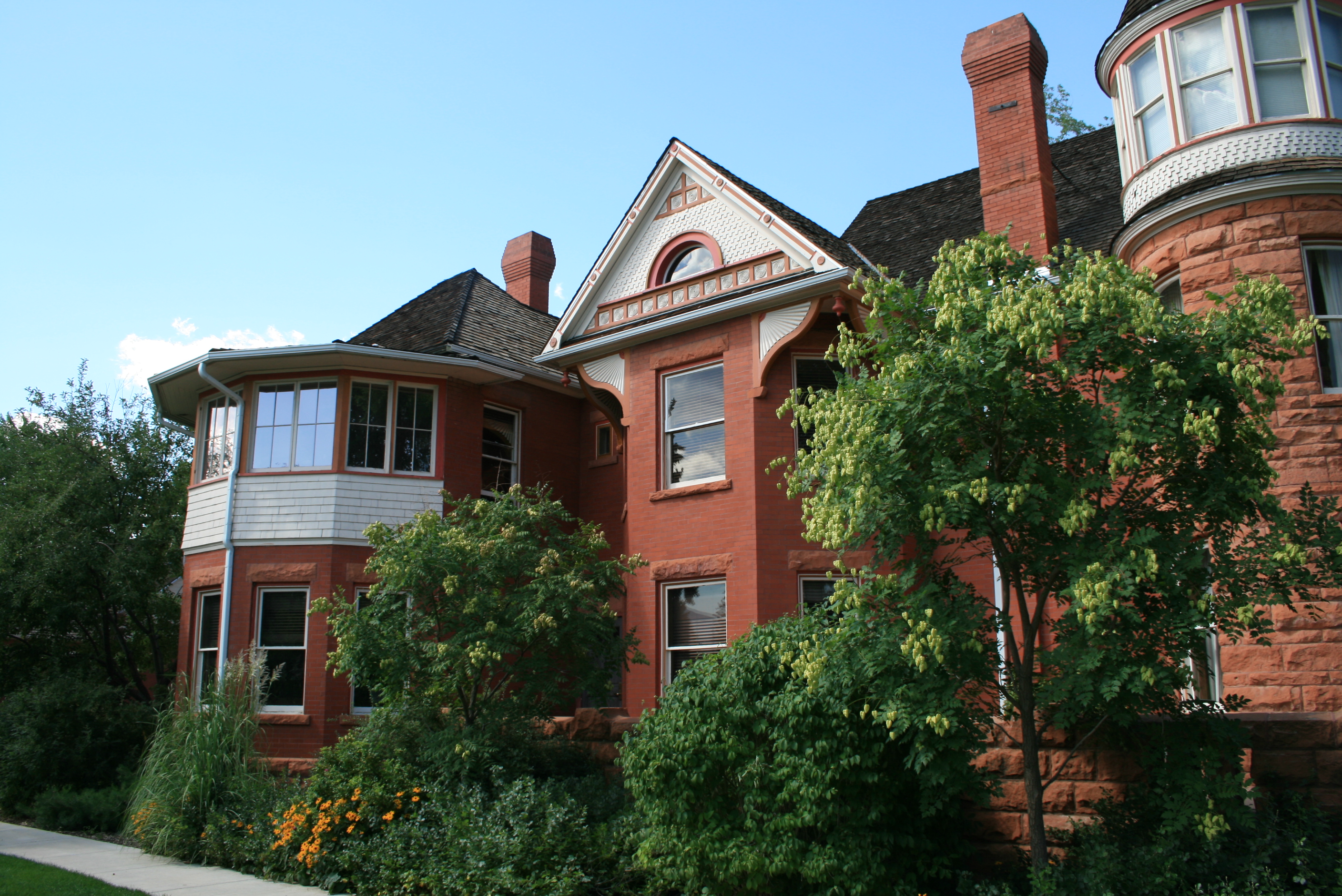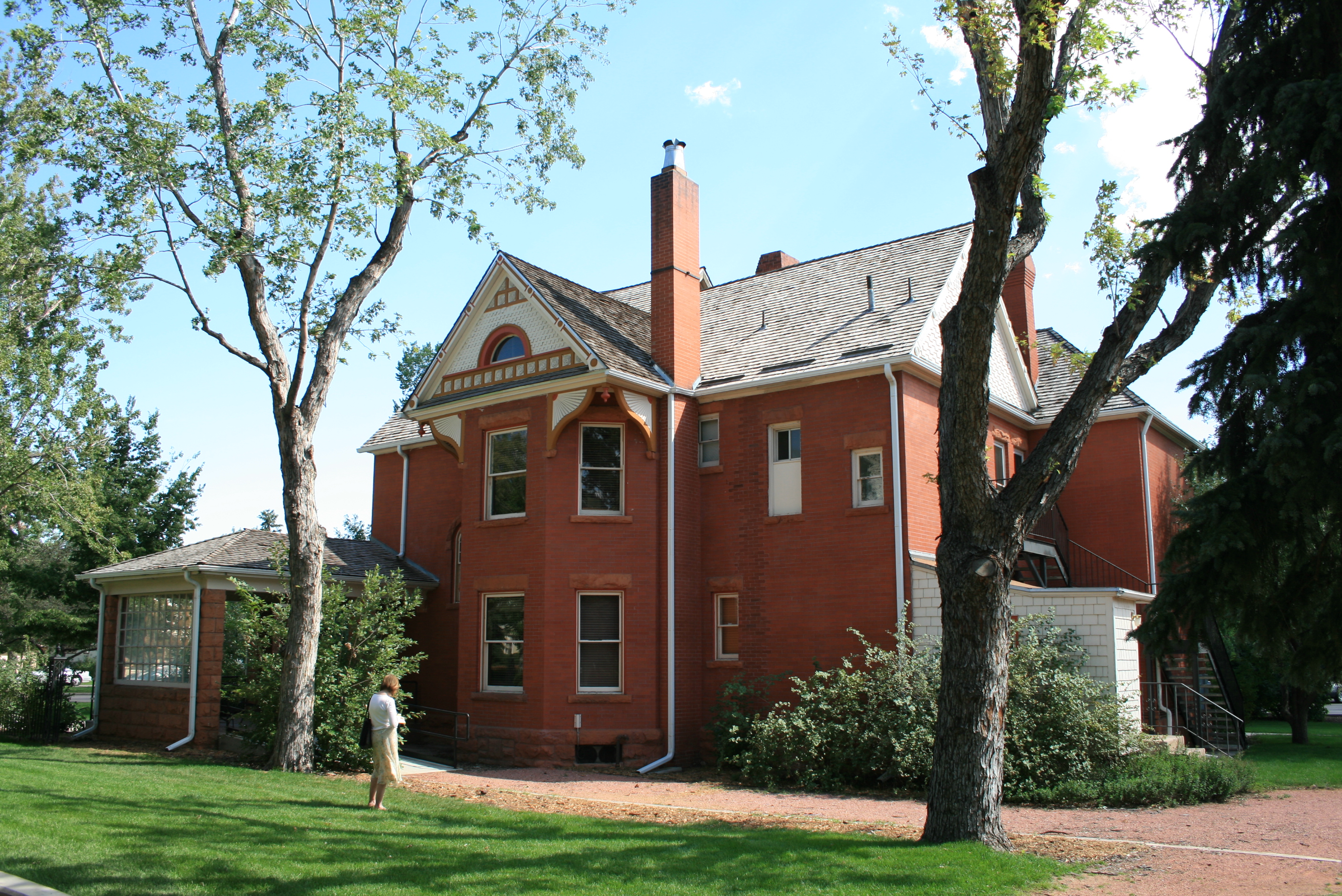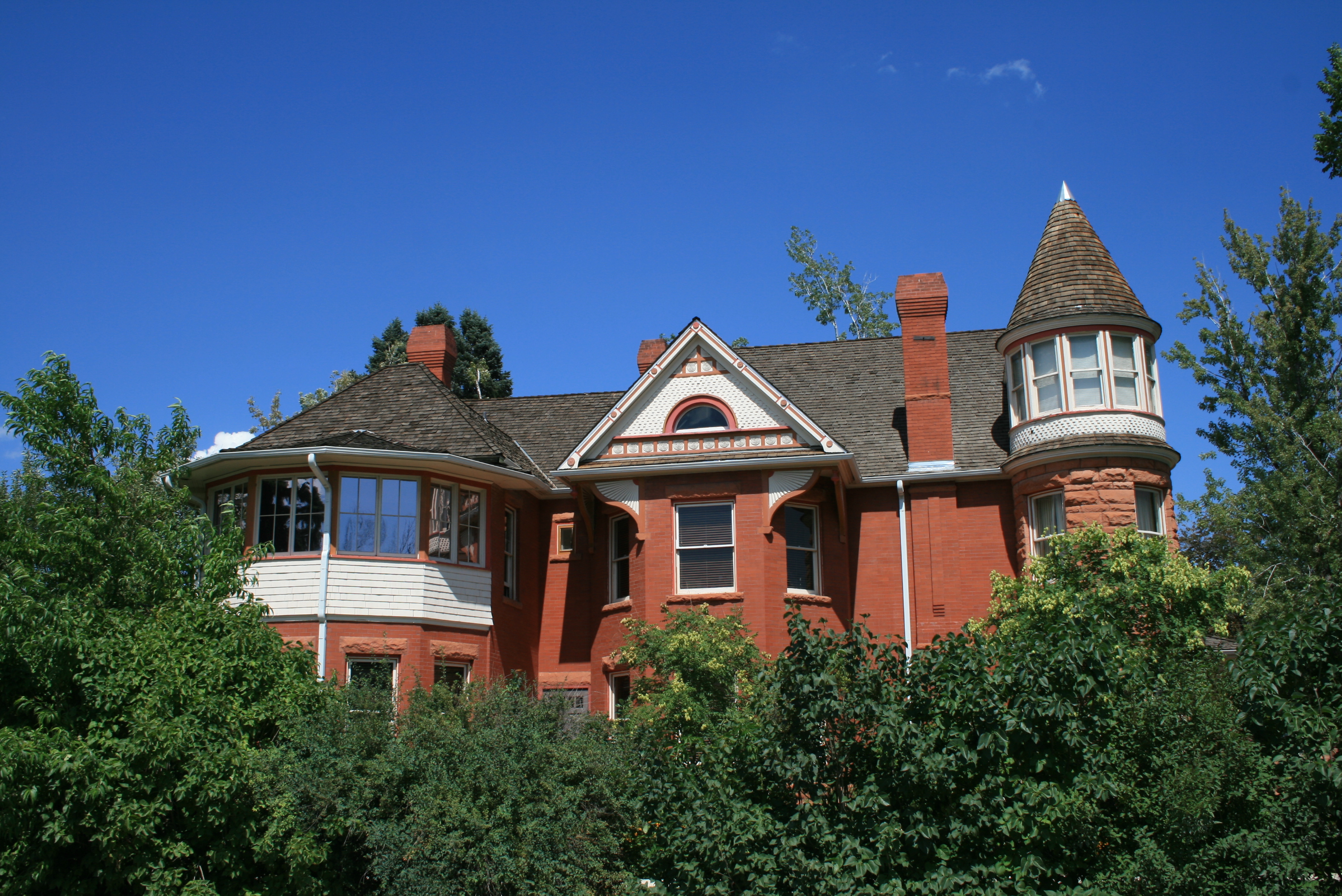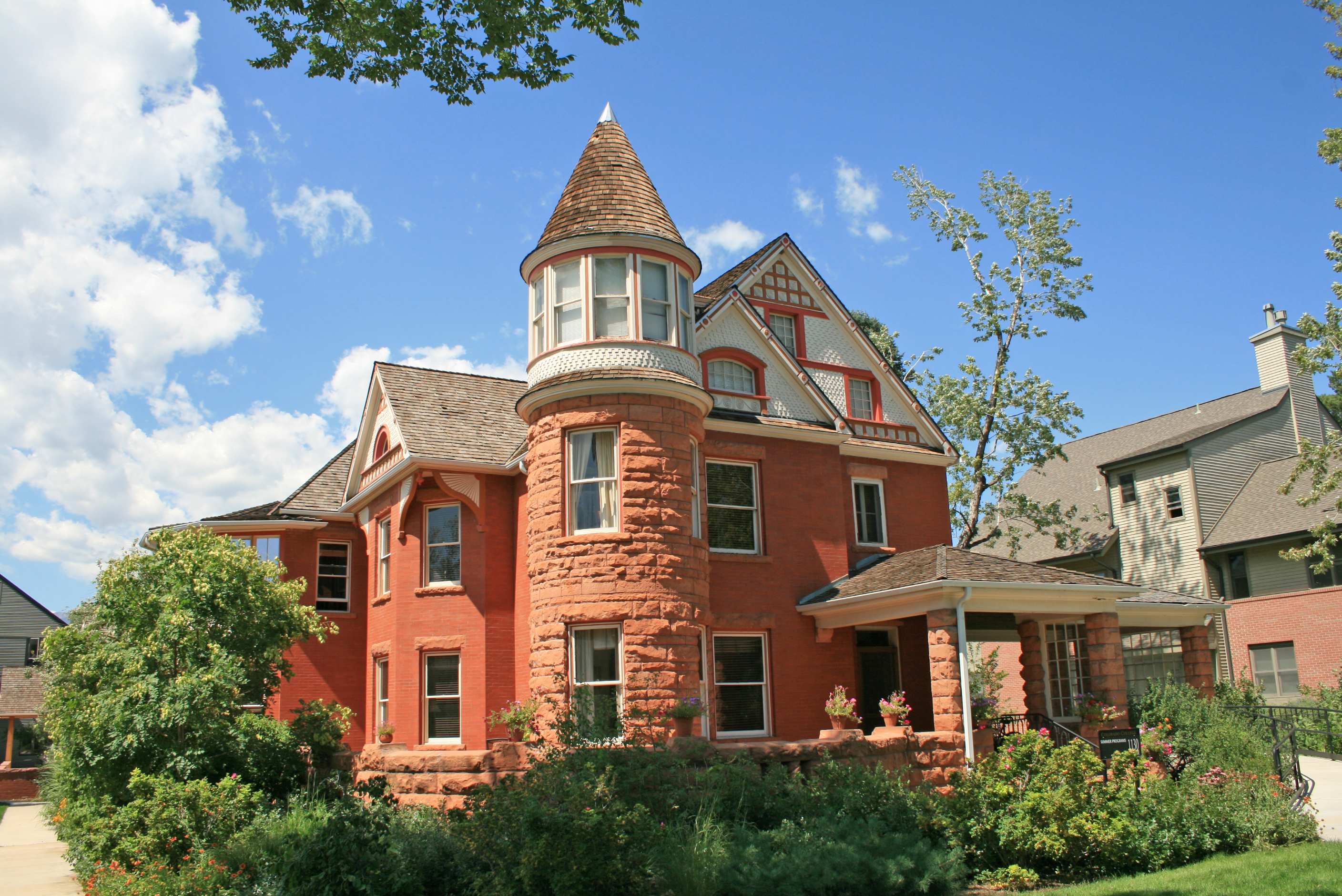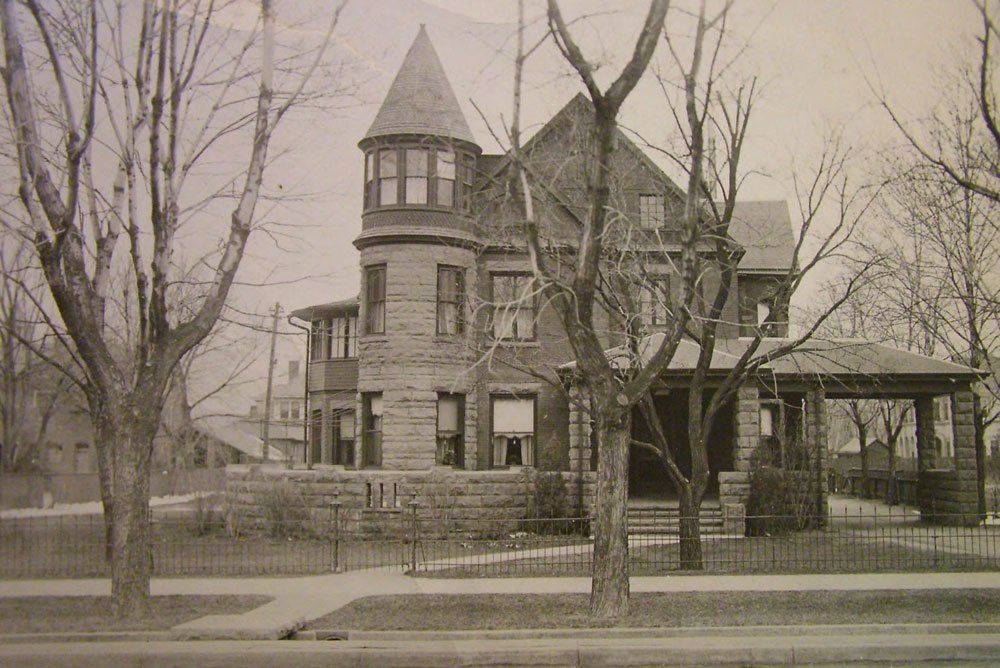Morreale House
(Lindley-Johnson-Vanderhoof House)
Tour Stop: N/A
Current Name: Morreale House
Historic Name: Lindley - Johnson - Vanderhoof House
Address: 1130 N. Cascade Avenue
Year Completed: 1892
Architectural Style: Late Victorian/Queen Anne
Architect: William G. Fraser
Designation: National Register
Access Level: Morreale House is a working building. The public is invited inside, but we ask that ongoing activities not be disturbed.
In 1912, the Vanderhoofs moved to Colorado Springs, where Dr. Vanderhoof continued his practice specializing in otolaryngology. In 1919, Dr. Don Allison Vanderhoof purchased the property, owning it until 1945. He had his medical office in downtown Colorado Springs and not in the house. The Vanderhoofs had two children, Genevieve M. and Richard C. Richard Vanderhoof became a prominent Colorado Springs ophthalmologist. After Genevieve married Al Linger in 1926 and moved from home, the Vanderhoofs befriended Colorado College student Earl "Dutch" Clark and gave him their daughter's former room. Clark played quarterback on the college football team and was selected by the Associated Press as a member of the 1928 All-American team. He went on to play professionally for the Detroit Lions.
The Lindley-Johnson-Vanderhoof House is significant under Criterion C in the area of architecture as an excellent example of a high style Queen Anne residence. Author and artist Helen Anderson included the dwelling in her Historic Houses of Colorado Springs and Vicinity, calling it "picturesque" and a "splendid example of the diverse and individualized character of the Queen Anne style of the Victorian era." The house displays most of the common features of the Queen Anne style noted in History Colorado's Colorado's Historic Architecture and Engineering, including a vertical orientation, asymmetrical massing, a corner tower, bays, multiple projecting gables, contrasting materials, shaped shingles, and a prominent decorative porch. The design of the house is dominated by the three-story red sandstone and shingle corner circular tower with a conical (or "witch's hat") roof. Corner towers were popular elements frequently included in Queen Anne house designs of the mid-1880s to mid-1890s. Architect Mark Gelernter, author of A History of American Architecture, asserted the Queen Anne style "became the dominant style for American houses from 1880 to about 1910, employed for the most lavish and the most modest." The house also retains a remarkably intact interior, considering its many changes of ownership, periods as a rental property, and its conversion to college offices.
More Info:
National Register of Historic Places Registration Form
Letter announcing the listing of the Lindley-Johnson-Vanderhoof House on the National Register of Historic Places and the Colorado State Register of Historic Properties
Within the Colorado Springs context, the Lindley-Johnson-Vanderhoof House is a rare example of a high style masonry Queen Anne residence, principally featuring red brick and rock-faced red sandstone on its exterior. The overwhelming number of Queen Anne dwellings built in Colorado Springs were relatively small, frame, vernacular residences. The nomination for the North Weber Street-Wahsatch Avenue Historic District (5EP.348, NRIS 85000205, 8 February 1985) categorized 9 percent (48) of the district's resources as Queen Anne and reported that all were frame, with most of the buildings considered to be vernacular interpretations tending "to be less ornate than typically is found." The North End Historic District (5EP.333) nomination observed that the nine Queen Anne style dwellings in that area are "modest, conservative homes that could also be considered vernacular" and are "usually shingle." A History Colorado Office of Archaeology and Historic Preservation COMPASS file search revealed just 54 Queen Anne style residences within the city, of which only three are listed in the National Register: the Bemis House, 506 N. Cascade Avenue (5EP.196, NRIS 79000598, 14 September 1979); Burgess House, 730 N. Nevada Avenue (5EP.789, NRIS 90001418, 13 September 1990); and Gwynne-Love House, 730 N. Cascade Avenue (5EP.3956, NRIS 87000010, 5 February 1987). All three are large-scale dwellings; the first two are frame, while the latter is frame atop a high raised stone foundation. In 2008, Senior City Planner Timothy J. Scanlon opined only two other Queen Anne style residences in the city in addition to the Lindley House incorporated substantial masonry elements. This information supports the Gazette's January 1893 observation that the Queen Anne style Lindley-Johnson-Vanderhoof House was "one of the few handsome brick residences in the city."



